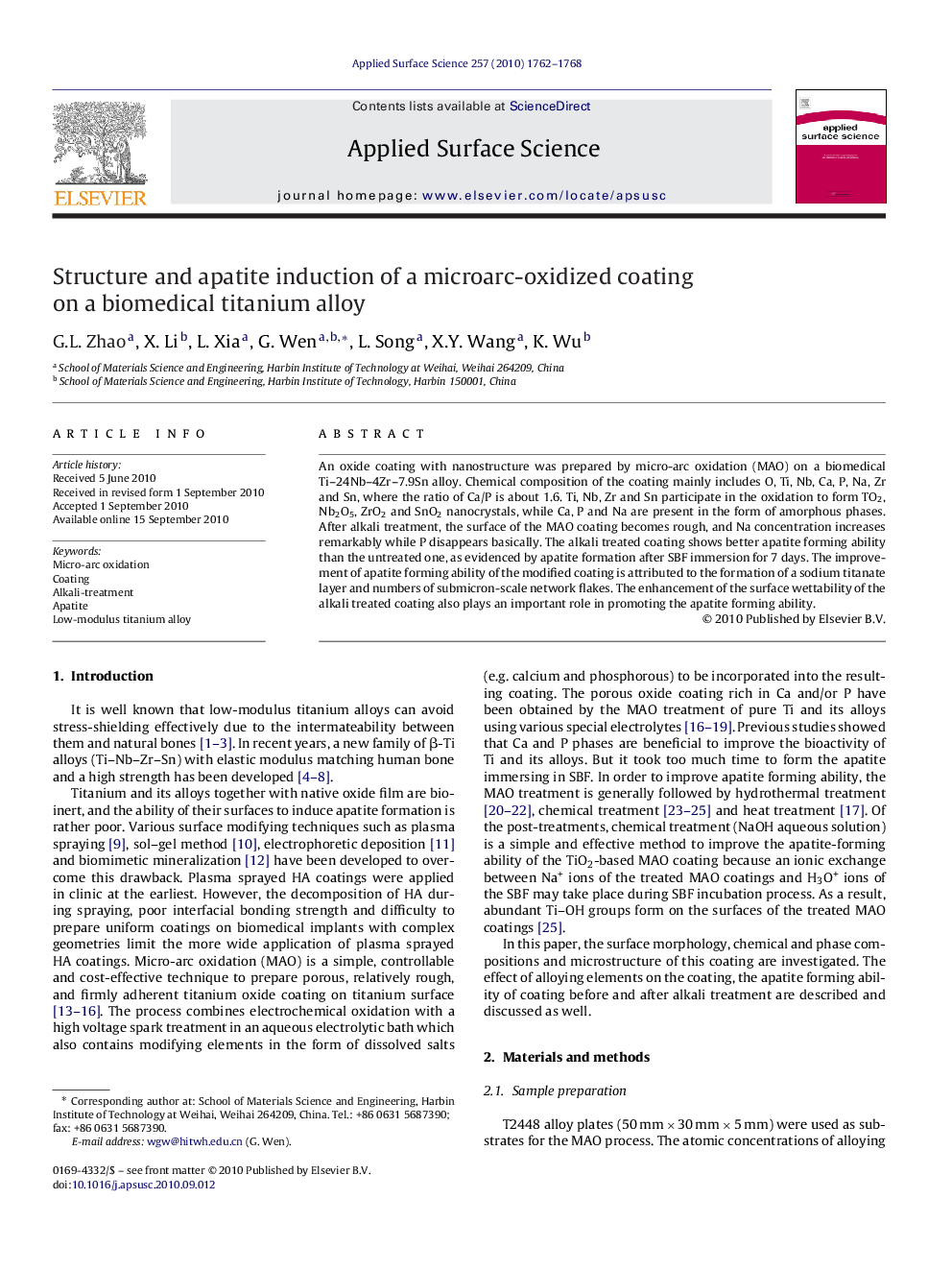| Article ID | Journal | Published Year | Pages | File Type |
|---|---|---|---|---|
| 5359542 | Applied Surface Science | 2010 | 7 Pages |
Abstract
An oxide coating with nanostructure was prepared by micro-arc oxidation (MAO) on a biomedical Ti-24Nb-4Zr-7.9Sn alloy. Chemical composition of the coating mainly includes O, Ti, Nb, Ca, P, Na, Zr and Sn, where the ratio of Ca/P is about 1.6. Ti, Nb, Zr and Sn participate in the oxidation to form TO2, Nb2O5, ZrO2 and SnO2 nanocrystals, while Ca, P and Na are present in the form of amorphous phases. After alkali treatment, the surface of the MAO coating becomes rough, and Na concentration increases remarkably while P disappears basically. The alkali treated coating shows better apatite forming ability than the untreated one, as evidenced by apatite formation after SBF immersion for 7 days. The improvement of apatite forming ability of the modified coating is attributed to the formation of a sodium titanate layer and numbers of submicron-scale network flakes. The enhancement of the surface wettability of the alkali treated coating also plays an important role in promoting the apatite forming ability.
Related Topics
Physical Sciences and Engineering
Chemistry
Physical and Theoretical Chemistry
Authors
G.L. Zhao, X. Li, L. Xia, G. Wen, L. Song, X.Y. Wang, K. Wu,
